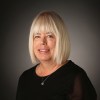Younger Nevadans driving new surge of COVID-19 cases
Nevada and Clark County this week are reporting record numbers of COVID-19 cases, but not hospitalizations or deaths. A key reason is that young people, who tend not to get as sick from the coronavirus, are testing positive more than ever before, the local health district’s medical investigator said Friday.
COVID-19 has been especially cruel to older people who more often have underlying health conditions, with people over age 65 making up 76 percent of deaths in Clark County. At the onset of the outbreak in Southern Nevada, this age group was testing positive at the highest rates, according to Southern Nevada Health District data.
However, new data from the district shows that county residents ages 18 to 24 are now testing positive at rates higher than any other age group — three times as much as those 65 and older — followed by those age 25 to 49.
“What that says to me is that we have a lot of new infections among people who are at lower risk of having bad outcomes or severe outcomes from this disease,” said Dr. Vit Kraushaar, medical investigator for the health district. “Even if they end up in the hospital, they might not be in the hospital as long, and they’re less likely to die.”
In Nevada, almost 500 people have died from COVID-19, more than 400 of them in Clark County, since the first case was announced in early March.
Different surges
The current surge in cases looks very different than a spike in April, when hospitalizations and deaths related to the local outbreak were at their peak.
In April, the highest number of new cases in the state in a week was more than 1,000, compared with more than 2,000 last week, according to data from the Nevada Department of Health and Human Services. Yet deaths last week totaled 23, far fewer than the 66 registered in a single week in April.
Hospitalizations have increased in June, but the seven-day average in the state of 382 as of Thursday remained well below April’s highest average of 692, according to data from the Nevada Hospital Association. Even then, Las Vegas Valley hospitals said they were not near capacity.
[ Nevada’s border states grapple with coronavirus spikes after reopening ]
“We are watching the new COVID-19 hospitalizations,” hospital association spokeswoman Amy Shogren said. “Despite rising COVID-19 admissions, hospital capacity remains good throughout the state.”
Another factor in the current surge is that far more people are being tested now compared with the early months of the outbreak, when testing was reserved primarily for the very sick. This meant that people infected with only mild or moderate symptoms were not being tested.
In April, the highest number of people to be tested in a week was more than 9,000. Last week, the number was more than 36,000.
‘Then my mom got sick’
Still, the disease’s trajectory in both Nevada and Clark County is moving in the wrong direction. Upticks in hospitalizations and the percentage of people testing positive are both signs of increasing disease transmission in the community.
“I think, in this trajectory, it’s just a matter of time before we start to see higher levels of hospitalization and increases in deaths,” Kraushaar said. “When you start to see a lot of working age adults who are getting sick, it’s just a matter of time before they come in contact with people who are at higher risk,” such as older relatives.
When his office reviews deaths from COVID-19, “you hear stories,” Kraushaar said. “Someone will say, ‘Well, I got sick first and then my mom got sick, and then my mom died.’ I think that’s a terrible burden for someone to have to live with.”
Mass gatherings, protests
An issue, he said, is that some people have resumed their normal lives as if there no longer were a pandemic. People are returning to work, eating at restaurants and going to events, sometimes without taking adequate precautions.
In Clark County, contact tracing, where close contacts of newly diagnosed cases are informed that they might have been exposed to the disease, has not yet revealed striking patterns of how people are becoming ill, Kraushaar said.
Statewide, about 11 percent of newly diagnosed people in the first half of June said that they had been to a mass gathering, according to state data from contact tracing. About 12 percent said they had been to a “civic activist event,” Julia Peek, deputy administrator with the Nevada Department of Health and Human Services, said Wednesday evening. She spoke at a news conference where Gov. Steve Sisolak announced a mandate for people to wear face coverings in public.
Wake-up call
Kraushaar described the upward trajectory as a “wake-up call” to community members that things need to change.
“Maybe they’ll wear masks if they’re forced to, or if they’re going to a business and the business requires it,” he said. “Masks provide some protection and protect others. This is one way we can really blunt the impact of this pandemic. … Social distancing is even better than wearing a mask.”
Beyond any government mandates, he urged individuals to consider how they can build precautions into their lives.
“How do we take those precautions in our daily lives? How do we make that sustainable for ourselves? How do we build those habits so that it’s second nature to us?”
Contact Mary Hynes at mhynes@reviewjournal.com or 702-383-0336. Follow @MaryHynes1 on Twitter. Review-Journal staff writer Michael Scott Davidson contributed to this report.
Related
Nevada's border states grapple with coronavirus spikes after reopening












































